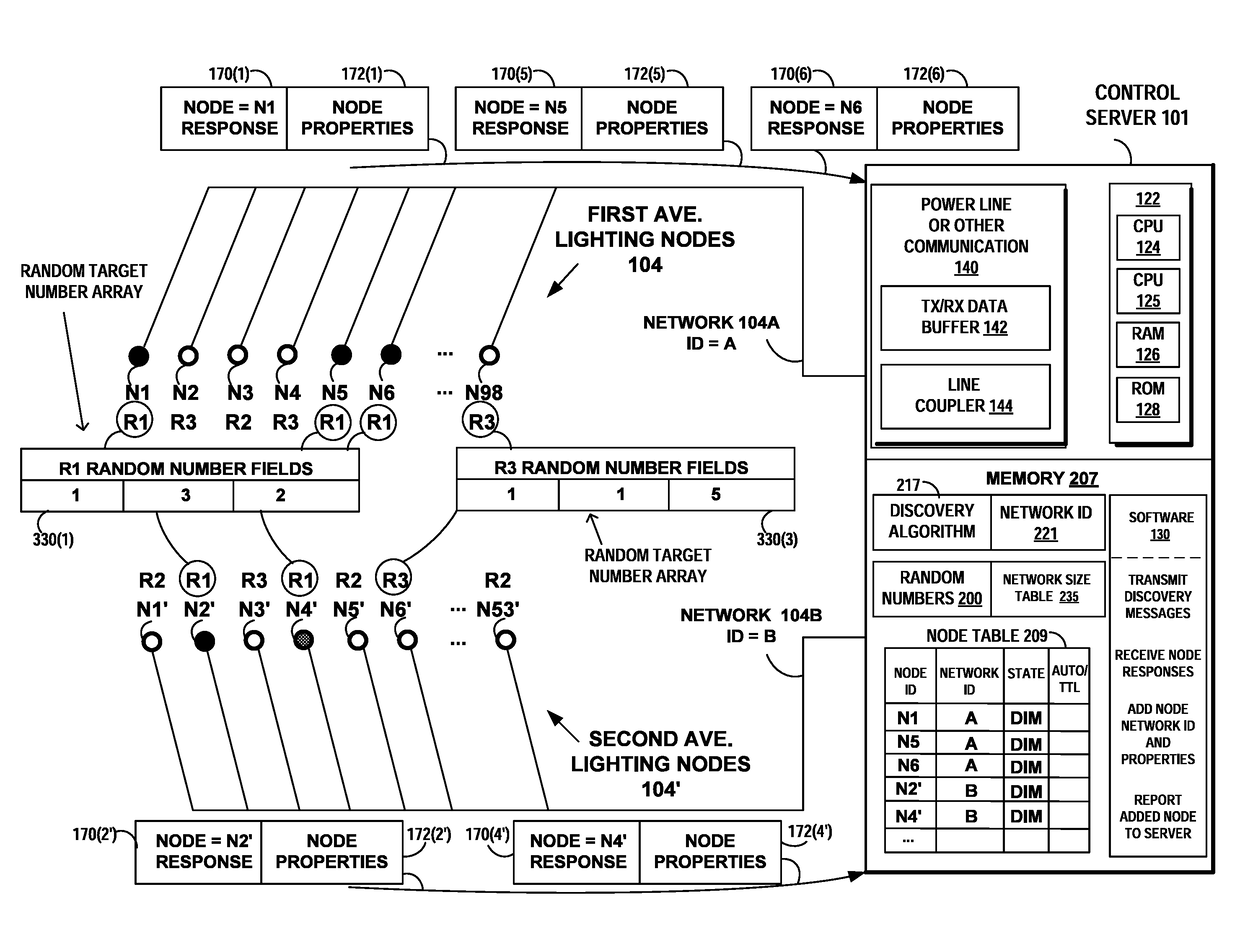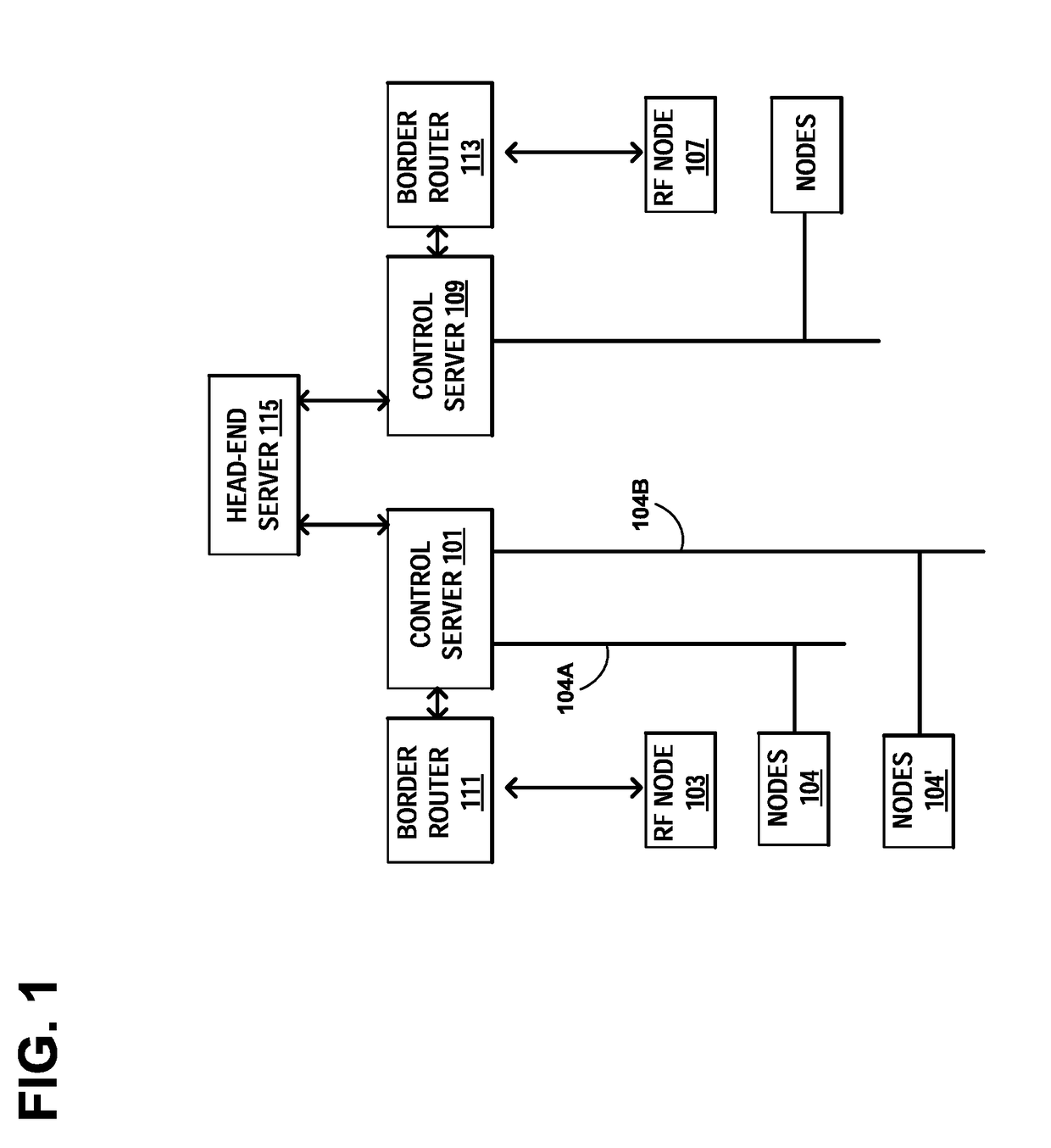Filtered discovery of devices on a network
a discovery and network technology, applied in the field of network discovery, can solve the problems of hidden nodes, network expansion, discovery and control of new lighting device nodes, etc., and achieve the effects of reducing or managing the number of responses, avoiding network congestion, and reducing the number of responses
- Summary
- Abstract
- Description
- Claims
- Application Information
AI Technical Summary
Benefits of technology
Problems solved by technology
Method used
Image
Examples
Embodiment Construction
[0028]Example embodiments of the invention solve the problem of discovery and control of new lighting device nodes in a lighting network, as the network increases in size. In accordance with an example embodiment of the invention, the system manages the quantity of responses by discoverable lighting devices in the network, in responding to a device discovery request from a lighting control server.
[0029]FIG. 1 illustrates an example networked lighting control system including a head-end server 115 that manages control server 101 that interfaces with router 111 and lighting networks 104A and 104B having different protocols, such as power line communication networks or wireless communication networks. The head-end server may manage additional control servers, such as control server 109 that interfaces with router 113 and lighting networks having different protocols. The head-end server 115 may be used to design, install, or maintain networks, channels, routers, and lighting devices. Fo...
PUM
 Login to View More
Login to View More Abstract
Description
Claims
Application Information
 Login to View More
Login to View More - R&D
- Intellectual Property
- Life Sciences
- Materials
- Tech Scout
- Unparalleled Data Quality
- Higher Quality Content
- 60% Fewer Hallucinations
Browse by: Latest US Patents, China's latest patents, Technical Efficacy Thesaurus, Application Domain, Technology Topic, Popular Technical Reports.
© 2025 PatSnap. All rights reserved.Legal|Privacy policy|Modern Slavery Act Transparency Statement|Sitemap|About US| Contact US: help@patsnap.com



